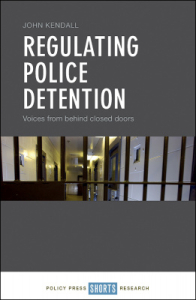Around 20 people, including a disproportionate number of BAME detainees, die in police custody in England and Wales each year with a common cause of death as asphyxia following excessive and inappropriate restraint.
Criticism of the police for this and many other angles is unsurprising and radical solutions are proposed. Some critics say the solution is to defund the police, and calls for this usually look to solutions which could be provided by the community.
The police should operate custody in a way which causes detainees the least harm, and regulation of police conduct in custody suites should lead to an improvement in the behaviour of the police, but key to this are the identity and characteristics of the regulator. Police conduct in custody suites is largely self-regulated, with digital records being compiled by the police. The police have been known to falsify these records, so the records are in any event of little value as protection for suspects.
The Independent Office of Police Conduct deals with complaints after the event, and the Joint Inspection Teams from Her Majesty’s Inspectorate of Constabulary and Fire and Rescue Services and Her Majesty’s Inspectorate of Prisons visit each custody suite just once every five years. There is clearly a big gap to be plugged here, which could be done by a community institution providing on-the-spot regulation. The serious death toll in custody could be reduced by a community supervision of the effective regulation of police conduct in custody suites, instead of the police regulating themselves.
We do have a resource available for regulating police conduct and safeguarding detainees: the Independent Custody Visiting Scheme. Custody-visiting was originally intended to deter police misconduct which might lead to the neglect, abuse or death of detainees in police custody, but this has not proved a solution in practice. My research found that the Scheme has no effect on police behaviour, and that it is neither independent nor effective in regulating police conduct or in safeguarding detainees.
The Scheme sends visitors recruited by the local Police and Crime Commissioner to every custody suite once a week, on what is supposed to be a random and unannounced basis, but often, my research showed, the police knew when to expect them. The police sometimes did not admit visitors to the custody suite straight away, and they did not always allow them to meet all the detainees. The failure of the Scheme is particularly apparent when one looks at the very brief meetings between the detainees and the visitors. The meetings are supervised by the custody staff, so there was no chance for the detainees to talk to the visitors in confidence, and the meetings were, as some of the detainees interviewed for the research said, a complete waste of time in that they achieve nothing towards the safeguarding of the detainees. The visitors did not have the necessary powers to enforce their regulation, and they did not feel able to challenge the police. I found that the detainees did not trust the visitors, and neither did the police respect them. The visitors’ reports were vetted by the custody sergeant before being sent to the Police and Crime Commissioner, and their reports were not used to hold the police to account: the visitors were not allowed to go to the press with their findings.
A properly reformed, independent system of custody-visiting would achieve effective regulation of the conduct of the police in custody suites – and save the lives of BAME and white detainees. Representatives of the community with responsibility for regulating the conduct of the police would take full notice of the conditions of police custody, would ensure that the police ran custody properly and would be empowered by the arrangement.
Effective custody-visiting could and should be an instance of community engagement with the criminal justice system, and it could and should be one of the practices contributing to good policing. Visits by professionally trained volunteers would benefit detainees by having the potential to save the lives of those detainees who die in police custody because police misconduct would be deterred by effective independent regulation. Effective custody-visiting would benefit the police, in providing them with applicable regulation: they would be justified in seeking the confidence of the community if the published results of the regulation showed that they achieved high standards. And it would benefit the community, bringing public attention to how custody is run and inspiring strongly motivated people with the ability and the commitment to volunteer to be custody visitors, knowing that they would be performing a really valuable function.
As things stand, there is little interest among members of the public in the conditions or policy of custody, and no forum for public discussion of the issues. Custody visitors could look into wider policy issues of custody as part of their work. Their work would give them many useful insights, and they could take part in open, democratic debates about custody policy which simply do not occur today. This radically improved system of custody-visiting would also greatly enhance police accountability.
John Kendall, external associate, Centre for Crime, Justice and Policing, University of Birmingham.

Regulating Police Detention by John Kendall is available on the Bristol University Press website. Order here for £29.99.
Bristol University Press/Policy Press newsletter subscribers receive a 25% discount – sign up here.
Follow Transforming Society so we can let you know when new articles publish.
The views and opinions expressed on this blog site are solely those of the original blog post authors and other contributors. These views and opinions do not necessarily represent those of the Policy Press and/or any/all contributors to this site.
Image credit: Ye Jinghan on Unsplash


